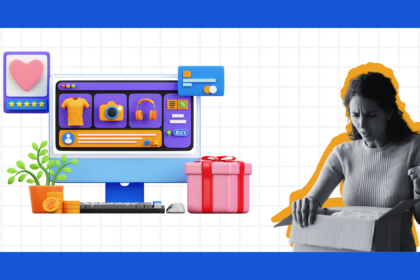In the always-on retail environment, the convenience of a seamless experience is the key to winning more customers. According to Linnworks research, over 80% of shoppers are looking for a frictionless, cross-device ecommerce experience.
The challenge for retailers is that they’re busier than ever merchandising products, processing payments, delivering orders and juggling a multitude of other daily tasks. To scale the business without sacrificing convenience, companies should consider automation services, such as LateShipment.com. The benefits of automation are clear for the business as a whole, and automation can also transform the customer experience even when the customer isn’t directly involved.
Shopping and checkout experiences can be managed directly by the customer, but that’s only half of the overall order experience. The post-purchase phase can present a series of complex tasks — including shipping, tracking, delivery, returns, reviews and more — and automation helps ensure these tasks are managed in an efficient manner. Automation helps create a positive post-purchase experience for the customer and can have a significant impact on engagement and revenue opportunities.
Managing Orders
Supply chain disruptions have affected businesses and consumers across the board, causing growing dissatisfaction among buyers and leaving sellers to find alternative vendors, products and solutions.
While automation won’t necessarily resolve these issues, it can help scale ordering processes to provide efficient fulfillment services and eliminate delayed or partially fulfilled orders. For example, automation can help logistics and fulfillment centers communicate with each other to locate alternative products and routes for orders. In other cases, automation can be used to prevent a customer from placing an order for out-of-stock products.
Automation can also help eliminate manual record-keeping, freeing up time for your employees to focus on other tasks and minimizing human error. As orders are placed, automated systems can begin fulfillment processes while monitoring inventory levels.
Fulfillment
Managing Inventory
In what we call the effortless economy, consumers have high expectations for convenience. They expect to order from their chosen channel by selecting the shipping or pickup option that works best for them. Of course, customers can’t place orders if there’s no product to sell. Running a successful ecommerce business requires companies to have inventory management automation tools that order the right stock in the right quantity and at the right time to ensure order fulfillment occurs without delay.
Not only is it important to understand the demand for each product, but you also need to know how long it takes to replenish that inventory. This knowledge helps prevent delays, out-of-stock notices and poor customer experiences. Automation systems can be established to place orders directly to suppliers as inventory is sold, eliminating slower manual processes.
Managing Listings
Supply chain disruptions can cause significant issues for consumers and retailers alike. By managing listings automatically, you can remove or update products identified as out of stock, avoiding disgruntled customers by clearly indicating that a product is not currently available. Some software even offers the ability to make recommendations for a similar product or allow the shopper to sign up for a notification when the product is back in stock.
Predicting Supply and Demand
Automation software can also analyze sales patterns to anticipate predictable demand or adjust for seasonal spikes in sales. When this software is deployed, issues with overselling can be reduced or eliminated when inventory is automatically replenished. As demand declines or a newer product gains popularity, stock levels will continue to be adjusted. The ultimate benefit of automation is that this oversight allows sales and stock levels to be maintained at optimal levels, ensuring that products are available for customers when they’re ready to order.
Facilitating Delivery
Real-time delivery tracking can bring immediate attention to unexpected issues, giving you time to take corrective action before it affects the customer. If there are delays in shipping orders or other unresolved issues, you can proactively communicate with the customer to offer a solution. Regardless of the outcome, most customers appreciate open communication and effort to resolve delivery issues.
Automation can also be used to group orders together and select the most appropriate fulfillment company. The ideal company can vary depending on the channel, where the order was placed, the location of the products and customer, and the type and/or value of the product.
Retailers can set rules for automation so that decisions are made on how orders are fulfilled. This removes the risk of human error and replaces expensive manual processes with seamless automation that gets products from storage facilities to customers quickly.
Tracking Orders
If you have placed an important order online, you recognize the value of shipping notifications during the delivery phase. Consumers expect to have an estimated delivery date before completing a purchase, and those tracking expectations extend to the final delivery. By automating notifications, you can send emails and text messages directly to your customers throughout the order-delivery life cycle, helping to ensure a seamless delivery experience and saving time for your support team to focus on more critical tasks.
Some businesses take order tracking a step further by providing customer orders with a unique, branded tracking experience. This approach can provide essential tracking information in an easy and accessible format. Companies that incorporate branded elements such as logos, design or colors can provide a more consistent experience for the customer. This also communicates to customers that your brand prioritizes order tracking and fulfillment.
Improving Returns
Return processes can be time-consuming and costly, and bad experiences can drive away customers, sometimes permanently. As ecommerce sales skyrocketed in recent years, many retailers opted to extend their return policies to offset issues caused by the pandemic. This led to longer wait times for processed returns and lower customer satisfaction.
Instead of adjusting policies and timelines, improve your return process with automation. This approach can save time and labor while improving the customer experience. Seamless returns experiences can help businesses throughout the multichannel ecommerce journey to create loyal customers and redefine returns as a growth driver.
Collecting Customer Feedback
Customer service can’t improve without understanding your customers’ experience. Take the guesswork out of providing better post-purchase experiences for your customers. Gathering feedback from customers is crucial for companies to recognize successful practices and areas for improvement. Businesses selling through their websites can use delivery feedback to influence shipping decisions that optimize the experience, while businesses selling on social media can use it to make better delivery choices.
LateShipment.com and Linnworks
Linnworks has partnered with LateShipment.com to provide a host of benefits to help businesses like yours win more customers with positive post-purchase experiences. From staying on top of delivery issues to custom shipping notifications, branded tracking pages and more, our partnership with LateShipment.com helps brands build credibility and stronger customer relationships.
Providing a World-Class Customer Experience
Providing a world-class customer experience is one of the most important aspects of any business. A positive and consistent experience builds customer loyalty and drives success. In fact, according to Zendesk, 75% of customers are willing to spend more on a brand that provides a good customer experience. By contrast, service failures, even when seemingly miniscule, can have a drastic impact on your bottom line.
Your customers have made their expectations clear. Meeting them where they are and offering a convenient experience is key to customer satisfaction, but it’s not the only piece of the puzzle. Once they place an order, it’s up to you to provide a seamless experience and offer highly valued features throughout the customer journey.
As sales increase and operations scale, all ecommerce businesses must keep up with the pace of change. Maintaining high customer satisfaction can sometimes seem nearly impossible. However, by implementing well-designed automation strategies and partnerships, as seen with Linnworks and LateShipment.com, retailers can reduce the burden of manual processes while prioritizing the customer experience. To learn more about Linnworks and automated inventory management, request a demo now.
This article is a guest contribution from Linnworks






